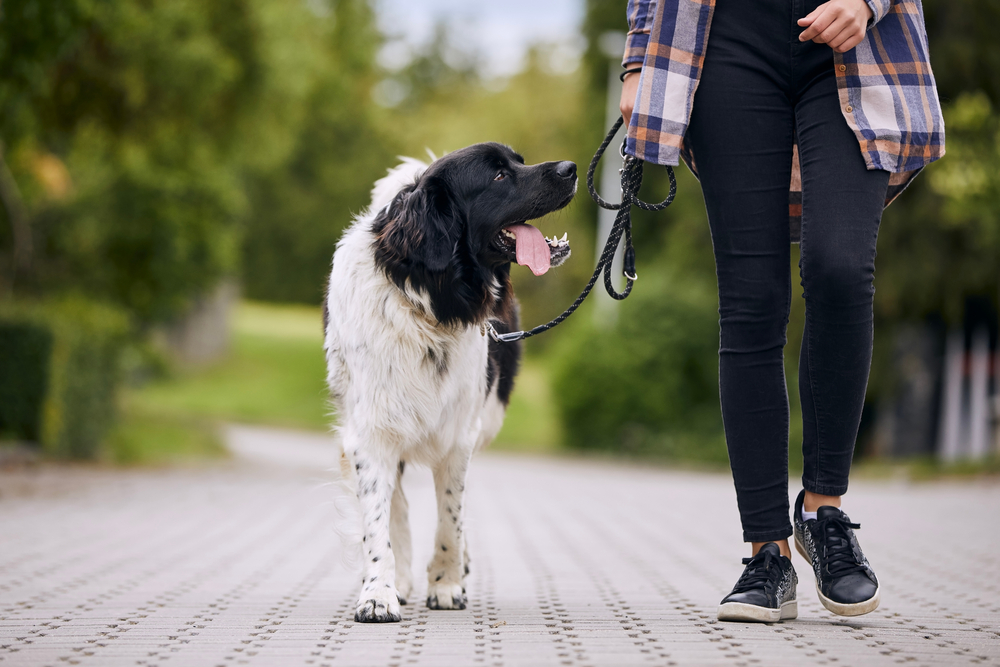
Though dogs need regular exercise to stay happy and healthy, a fun walk can quickly become an uncomfortable or dangerous experience.
Here are a few common mistakes dog owners make when taking their pets for a walk, according to veterinarians:
Approaching unfamiliar dogs without asking their owners
No matter how friendly your dog is, you don't know how the other dog might react. It's never safe to let your dog greet another dog unless you've checked with their owner.
Avoid walking your dog on de-iced sidewalks or streets
Snowy and icy weather can mean that chemical de-icing agents or rock salt have been distributed on streets and sidewalks. These products can cause burns on your dog's paws or lead to illness if your dog licks their paws after the walk. Consider using booties on your dog's paws if you can't avoid pavement treated with chemicals or rock salt.
Using an extendable leash can be unsafe
Though you may prefer using extendable leashes to give your pup more freedom, this can actually be dangerous for pets and owners. These leashes do not give you full control over your dog. It can also be harmful to the owner, because when a dog runs into an unsafe situation, like traffic, many owners instinctively grab the cord and can receive serious burns or deep cuts. Similar injuries can occur if the cord becomes twisted around an owner's legs when a dog runs away. Veterinarians recommend regular, non-retractable leashes with a 6-foot maximum length, especially when walking in the city.
Don't tug on the leash when your dog pulls
Though it may seem natural to tug on a dog's leash when they pull away, this isn't an effective way to train your pet to walk well. Dogs' brains are actually counterintuitive on this fact, because pulling on the leash can actually cause your dog to pull harder in order to stay balanced and not fall backwards. Instead, stand still and wait for your dog to look back at you. Then, reward your dog with praise or treats and start walking in your intended direction.
Letting a dog off the leash inappropriately is a major mistake
It is important to know that recall training — when an owner teaches a pet to return when called — can take a long time to master and may not work during an emergency or if a dog is distracted. It is typically best practice to just never let your dog off the leash unless they are 100% confident the dog will always come back. However, even then, only let them off the leash in safe areas like fenced parks or dog runs.
Don't forget to reward good walking behavior
Training your pet to walk well is as important as training them to sit or stay. Look at each walk as a training opportunity to instill good walking habits. When your dog displays good behavior, immediately praise them and give them a treat. Rewarding your dog for good walking etiquette will help them associate walking calmly with praise.
Never use a choke or prong collar to prevent pulling
These types of restraints — known as aversive collars — use discomfort to teach dogs certain behaviors by tightening or pinching the skin when they pull on the leash. These collars have proven to rarely work and can actually cause significant harm to your dog. It is really best to use a head halter (like a Gentle Leader) or headcollar, which steers a dog's head when they pull and discourages this behavior while protecting the pet's neck.
Walk your small-breed dog in a harness instead of a neck collar
Small breeds such as Chihuahuas, Terriers, Pugs and Miniature Dachshunds/Poodles should not wear traditional neck collars to avoid damaging their sensitive tracheas. Feel free to ask anyone here at the clinic about which kind of restraint is best for your particular dog.
Don't ignore weather conditions
Make sure to look at the forecasted weather and to adjust the length of a walk based on its severity. Extremely hot or cold weather could make your pet sick or injured, like overheating in warm weather with a Bulldog or Boxer, or burns to their paws if the pavement is very hot. Walk times should be reduced and routes should be changed in very hot or cold weather to avoid hot pavement or slippery ice.
Don't forget to bring dog-waste bags
Besides earning you dirty looks from passersby, not using waste bags to clean up after your dog can be unsafe to others. Stool left behind can attract unwanted bugs and wildlife. Animal waste can also carry bacteria that may harm passing children or pets. Always keep waste bags attached to your pet's leash or harness to avoid forgetting them.
If you have any questions or would like to discuss any of these thoughts related to leash walking your dog further, please don't hesitate to reach out to our clinic.





